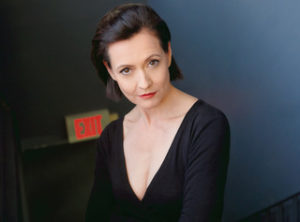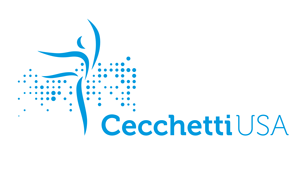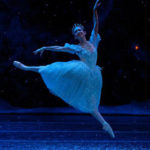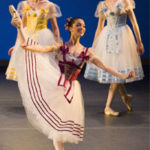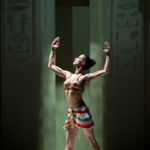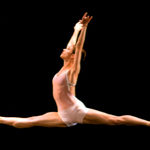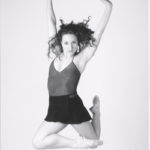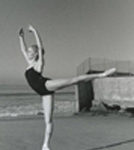Corina Gill
“The Cecchetti USA method training I received as a student helped to prepare me for my professional career in a significant way. Because I had a firm foundation of this pure, classical technique, I was able to later move through several different styles and techniques much more fluidly. It was a valuable foundation that helped shape me into a professional dancer.” ~Corina Gill, Boston Ballet (RIC)
Martha Leebolt
“I actually didn’t start serious training until I was 11 which is late for a girl. Sacrifices had to be made to focus on the yearly Cecchetti exams. It was hard because I was 11 in Grade 1 with eight year olds, so that was really rough at first. But then, when you are older, you move ahead quickly because you have the mind to do it. Cecchetti training gave me the ability to do anything in any style.” (RIC)
Ms. Leebolt is a Premier Dancer with Northern Ballet in England, trained in the Cecchetti Method at the Black Mountain Dance Centre in San Diego with Sylvia Palmer.In 2010, Ms. Leebolt was awarded “Outstanding Female Dancer (Classical)” in Great Britain and the next year was listed by Dance Europe as the 3rd best dancer in the world of the 100 Best Dancers in 2011. Recently, Martha was featured on the cover of Dance Europe.
Megan Pulfer
“My Cecchetti training was one of the best things I learned growing up. Cecchetti not only embedded a wonderfully strong and clean technique into my body but also taught me discipline and dedication. I’m incredibly fortunate to have had teachers who taught me this highly respected technique. It’s so important to get your teachnique refined when you’re young and not have to struggle with it later. The best part is your technique will alwyas be there for you when you go back to the basics. Being a professional dancer now, I will always have my technique to rely on so everything else is just icing on the cake.” (RIC)
Megan Pulfer received her Cecchetti Training at Huntington Academy of Dance under the direction of Marnell Himes-Ushijima. She continued her dance training at North Carolina School of the Arts. She has danced professionally with Cedar Lake 2, Missouri Contemporary Ballet and Kamea Dance Company, Israel.
Brittany Benington
“My Cecchetti training was a critical element in my ballet education growing up. Cecchetti gave me clean classical technique that was embedded at a young age. Additionally, preparing for my Cecchetti exams taught me to work toward my goals with both discipline and commitment. The technique gained from my Cecchetti training allowed me to successfully go on and dance professionally while adapting to various styles.” (RIC)
Brittany Benington recieved her Cecchetti training under the tutelage of Judith Hawkesworth and Marnell Himes-Ushijima at Huntington Academy of Dance in Huntington Beach. She has performed with Los Angeles Ballet, Ballet Tucson and Madison Ballet. She has also danced in television (House), and film (Curious Case of Benjamin Button).
Alisa Walton
Why Cecchetti?
When I decided to pursue qualification as a ballet teacher during, not after, a career in the performing arts, I thought of some of the teachers who trained me as a young dancer and realized that almost all of what I learned from these teachers, I took with me through my career as an Actor, Dancer, Choreographer and Theatre Director. I am disciplined. I value good technique first, I’m systematic during the creative process, I understand my place in the theatre space to maintain shapes and groupings. With experience, a strong sense of the performer’s relationship to the audience evolved, but it was in ballet class that I was given the tools to become a mature and versatile artist. One can’t wish for these attributes, and they aren’t intuitive. They are learned. And then practiced.
I studied the Cecchetti Method of Ballet.
I studied other methods and styles of ballet and dance too, of course, but I was required to take Cecchetti classes and do Cecchetti exams. This exacting artistic method, with its focus on line, shapes, timing, accents and musicality presented systematically in a comprehensive syllabus makes for skillful, versatile and employable dancers. I joined a ballet company at 16, and it wasn’t difficult to do the job. I had the tools I needed.
When I decided to become an actor, the training wasn’t hard, I had the tools I needed. When I, on a lark, started to do a bit of Circus and was immediately scouted by a company, I wasn’t nervous about the adventure, I had the tools I needed.
Syllabus does not stifle creativity, the artist’s individuality, or the artist’s willingness to take risks. It supports the adventure. One only needs to look at any of the Adages in Centre to realize that the technique is rich and layered and requires real strength and musicality.
In fact, my biggest challenge before deciding to teach the Cecchetti Method was that when I was teaching ballet, I was rudderless. My teaching wasn’t grounded in a system, and my natural ability was not enough. So Cecchetti was a choice. A choice to teach musicality. A choice to teach for strength. A choice to teach beautiful and precise use of the head. A choice to create well rounded thinking artists.
Some lessons come easy in life, and some don’t, but I thank the women who gave me those lessons – Jacqueline Kinsella Anderson, Joyce Shietze, Sheona Bell, Amy Blake Hoffman and Betty Seibert. Your passion to keep the Method relevant and very much alive for those you share it with continues to inspire me in all of my work.
Alisa Waltonhas been performing and teaching in the field of physical theatre for almost 30 years. Her performance career began with work as a ballet dancer, performing with companies like Les Grands Ballets Canadiens, and the Stom Dance Foundation, as well as work in television as a dancer for Canadian television corporations CBC, TVOntario and Sullivan Entertainment. After completing her conservatory training in the LeCoq Technique of Physical Theatre under Ron East, Walton went on to tour with various theatre companies, including shows at Young Peoples Theatre, and Carousel Players. She starred in the internationally aired and award-winning children’s series Polka Dot Shorts for eight seasons as the Marigold. Other television credits include the principal role of Socks the Monkey in “Elliott Moose is on the Loose” (series Television, Nelvana), the “Adventures of Noddy”, (CBC) “Brenda’s Room (Sask Tel) and numerous commercials.
Walton has also worked as a stunt dancer on stilts for several circuses, and was the Ringmaster for Cirque Sublime for two seasons. Under the stage name Anka Bendikova she performed as a hand-to-hand balancer. She also performed the circus arts of aerial hammock and bungee.
Most recently Walton appeared in episodes of “Riviera” Season 2, and “Impulse” Season 2.
Choreography credits include work for TV Ontario, Swizzlestick Theatre and Crow’s Feet Physical Theatre, and she produced the independent dance festival Human Dances.
Teaching credits include coaching for professional theatre companies in physical comedy, physical theatre, stage combat, stilt walking, dramaturgy and ballet for many Toronto and area arts high schools. She taught the art of mask and theatre-making at Kytes (theatre for at-risk or street youth) as well as with Circus Agnes, developing a short training programme for children at-risk in Etobicoke.
Walton prides herself on having had a quintessentially Canadian career in the performing arts, currently focusing her work on shows which are meaningful and educational to a cause.
Lab le Jeu was founded by Alisa Walton in 2009 in response to a need to showcase the talent and work of seasoned dance, circus and physical theatre artists at a point in their careers where they would normally retire to make room for younger performers. The company aims to draw on the dramatic and physical talent of professionals with long careers to make highly physical theatre that touches audiences. The company separates itself from the standard circus/acrobatic style of presentation where dramatic themes are loosely based around acts of skill. As Artistic Director, Walton uses skills to serve the dramatic outcome, but does not limit itself to overly modified versions of physical disciplines. Part of its mandate for performers is to push physical limits. Lab le Jeu’s show “Tikva’s Orchestra” was one of 10 of the Best of Fringe 2014. It explores the power of art in the face of atrocity, following the short journey of a Jewish cellist from the night of Kristallnacht to her deportation.
